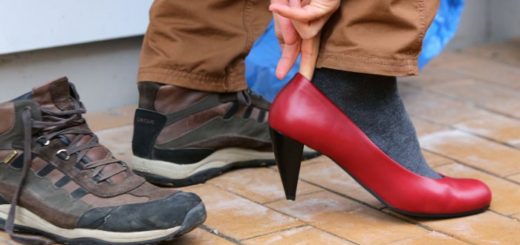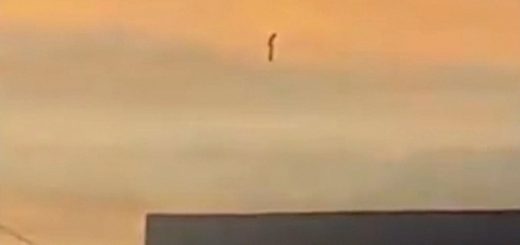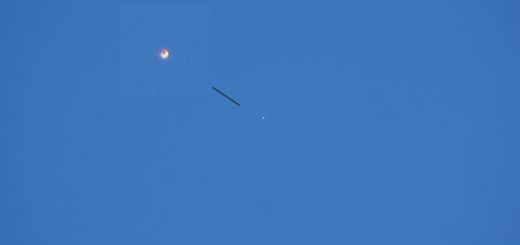SpaceX Launched Two Astronauts—Changing Spaceflight Forever

TODAY, SPACEX SUCCESSFULLY launched two astronauts to the International Space Station. WIRED was on site to witness the historic event.
Saturday T-4:00
It’s Saturday morning and in just four hours astronauts Bob Behnken and Doug Hurley are expected to become the first humans to ride a Dragon. The veterans of NASA’s space shuttle program are scheduled to catch a lift to the International Space Station inside SpaceX’s Crew Dragon capsule, which will be boosted to orbit by the company’s Falcon 9 rocket. The Demo-2 mission will be the final test before NASA certifies SpaceX’s capsule for human spaceflight and resumes regular crewed launches from the US after a nine-year hiatus. But the weather forecast is not looking good.
Swollen white clouds laze over Kennedy Space Center, portents of thunderstorms predicted to roll across the bay later in the afternoon. The Space Force’s 45th Weather Squadron, the group responsible for monitoring the weather around the launchpad, predicts only a 50 percent chance that the launch will occur today. That’s worse odds than they gave on Wednesday, the first attempt at the Demo-2 mission, which was scrubbed just 17 minutes before launch due to concerns about lightning near the pad.
In less than an hour, Behnken and Hurley will ride to the launchpad in a pair of white Teslas, climb into the crew capsule on the rocket, and start preparing for launch. Neither SpaceX nor NASA want the astronauts to go through the prelaunch procedures again for nothing, so the organizations meet to reevaluate the weather. At the press site, a crew of NASA employees are putting the finishing touches on a stage erected on the lawn for the president and his entourage, who are scheduled to arrive later in the afternoon.
The Demo-2 launch represents the culmination of nearly a decade of work by NASA and SpaceX. Following the end of the shuttle program, NASA was left without a rocket to send astronauts to space, so for the past nine years, the agency has relied on Russian rockets for a ride to the International Space Station. It was a pricey proposition—seats on the Soyuz capsule cost $80 million per astronaut. NASA embraced commercial crew contracts as a way to drive down the cost of space access by harnessing the powers of the market. And the gamble is about to pay off. Once SpaceX starts ferrying astronauts to orbit on operational missions, seats on Crew Dragon will cost roughly half the price of a seat on the Russian Soyuz capsule.
Most Popular
propella ebike
GEAR
The Propella 7-Speed Is the Budget Electric Bike to Get
PARKER HALL
A collage of phone book pages and an image of Edward Snowden
BACKCHANNEL
Inside the NSA’s Secret Tool for Mapping Your Social Network
BARTON GELLMAN
The vault of the Shrine of the Book building
SCIENCE
Turns Out 4 ‘Blank’ Dead Sea Scrolls Actually Have Text
JENNIFER OUELLETTE, ARS TECHNICA
Self-Checkout machine covered in caution tapes and cones
BUSINESS
Walmart Employees Want to Show Its Anti-Theft AI Doesn’t Work
LOUISE MATSAKIS
ADVERTISEMENT
After reaching orbit, Behnken and Hurley will spend about 19 hours chasing down the International Space Station. The Dragon is designed to fly autonomously, but along the way they will test out some manual maneuvers just to make sure the backup systems are working. Although both astronauts will spend up to three and a half months working on the space station, the Demo-2 mission is ultimately a test flight meant to show that the Crew Dragon capsule performs as expected. Behnken and Hurley will join an exclusive club of just seven astronauts who have been test pilots on a brand new spacecraft.
NASA astronauts Doug Hurley and Bob Behnken walk out of a building
Astronauts Doug Hurley (left) and Bob Behnken walk out of the Operations and Checkout Building on their way to Launchpad 39A at Kennedy Space Center. PHOTOGRAPH: JOE RAEDLE/GETTY IMAGES
SpaceX and Boeing, the other company tapped by NASA to develop a commercial crew vehicle, have spent the last decade racing to become the first to deliver NASA astronauts to orbit. Along the way, both companies faced a number of setbacks: SpaceX’s Crew Dragon capsule exploded during a test, Boeing’s Starliner capsule had to be deorbited after a timer failure during an uncrewed demo flight to the space station, and both companies experienced numerous parachute failures during tests. But each failure provided crucial data that the companies needed to make their capsules as safe as possible for crewed launches.
SpaceX won’t just be launching NASA astronauts, of course. Last year, Bigelow Aerospace—a space company run by the billionaire hotelier Robert Bigelow—purchased four flights on the Crew Dragon and is selling tickets for $52 million apiece. In 2018, Elon Musk also sold tickets to the Japanese billionaire Yusaku Maezawa for an around-the-moon excursion on SpaceX’s next-generation Starship rocket. If Musk has his way, this will also be the rocket that sends humans to the lunar surface and eventually to Mars.
The Demo-2 launch heralds the era of profit-driven human space exploration. During a press conference earlier in the week—held remotely due to rain—NASA administrator Jim Bridenstine underscored the agency’s commitment to commercial spaceflight as a way to create a robust extraterrestrial economy. “We need to build commercial space stations,” Bridenstine told reporters. “And in order to create the market where these kinds of programs can be capitalized with public-private partnerships, we need to prove that there is an economy for human activity in low Earth orbit.”
In just a few hours, NASA and SpaceX are about to usher the world into this brave new stage of commercial space exploration.
T-3:00
Three hours to launch, and it’s muggy as hell at the Kennedy press site. The parking lot sweats rain from a brief downpour, and patches of blue sky briefly appear between the clouds.
Most Popular
propella ebike
GEAR
The Propella 7-Speed Is the Budget Electric Bike to Get
PARKER HALL
A collage of phone book pages and an image of Edward Snowden
BACKCHANNEL
Inside the NSA’s Secret Tool for Mapping Your Social Network
BARTON GELLMAN
The vault of the Shrine of the Book building
SCIENCE
Turns Out 4 ‘Blank’ Dead Sea Scrolls Actually Have Text
JENNIFER OUELLETTE, ARS TECHNICA
Self-Checkout machine covered in caution tapes and cones
BUSINESS
Walmart Employees Want to Show Its Anti-Theft AI Doesn’t Work
LOUISE MATSAKIS
ADVERTISEMENT
Reporters from all the major news sites huddle under tents erected on the roofs of a cluster of ramshackle newsrooms built during the Apollo era. Others mill about on the lawn, making small talk from behind NASA-mandated masks. The Covid-19 pandemic has put a damper on the spectacle—under normal circumstances, Kennedy would be crawling with hundreds of reporters and public spectators. Launch day is typically an orgy of rocket fanatics and spaceheads high off prelaunch energy. Not today. It feels like SpaceX organized the world’s biggest party, but hardly anyone bothered to show up.
But no one at Kennedy is talking about the pandemic, really. It’s become a sort of background hum, so pervasive and unrelenting that you no longer notice it. Instead, everyone’s talking about George Floyd, the black man killed by a white police officer this week, and the entire thing caught on video; they’re talking about riots in Minneapolis, and reporters getting arrested live on air. They’re drawing comparisons to 1968, when NASA was preparing to send humans to the moon, Martin Luther King, Jr. was assassinated, and a crooked politician was elected president.
And of course they’re talking about the weather, always the weather. Two miles in the distance, the Falcon 9 and Crew Dragon stand erect on the pad, distorted by the humid Florida air. The weather forecast for Kennedy isn’t improving, and even if it does, it might not be enough. NASA needs clear weather all the way from the Eastern seaboard to the coast of Ireland in case of an abort during flight.
astronaut Doug Hurley giving a thumbs up from a Tesla
Astronaut Bob Behnken gives the thumbs up on his way to the launchpad on Saturday.PHOTOGRAPH: DANIEL OBERHAUS
Two miles away from the press site, Behnken and Hurley roll up to Launchpad 39-A in a white Tesla Model X—a major departure from the “Astrovan,” a modified Airstream motorhome that brought astronauts clad in orange flight suits to the pad during the shuttle era. It’s the same pad that hosted the final space shuttle mission in 2011, the last time NASA astronauts launched from the US. SpaceX leased the historic launchpad a few years ago and since then has given it a facelift. The launch tower’s open facade, once a dense mesh of steel struts, now has a sleek black exterior reminiscent of the alien monolith in 2001: A Space Odyssey. A window-lined crew access arm extends from the crown of the tower to the Crew Dragon mounted on top of the rocket and serves as the bridge between the heavens and the Earth. The brilliant white of the Falcon 9 rocket stands in sharp contrast to the tower, its exterior emblazoned with the cherry red NASA “worm” logo that was revived for the launch.
Most Popular
propella ebike
GEAR
The Propella 7-Speed Is the Budget Electric Bike to Get
PARKER HALL
A collage of phone book pages and an image of Edward Snowden
BACKCHANNEL
Inside the NSA’s Secret Tool for Mapping Your Social Network
BARTON GELLMAN
The vault of the Shrine of the Book building
SCIENCE
Turns Out 4 ‘Blank’ Dead Sea Scrolls Actually Have Text
JENNIFER OUELLETTE, ARS TECHNICA
Self-Checkout machine covered in caution tapes and cones
BUSINESS
Walmart Employees Want to Show Its Anti-Theft AI Doesn’t Work
LOUISE MATSAKIS
ADVERTISEMENT
Behnken and Hurley arrive at the pad and emerge from the Tesla’s gull-wing doors in matching white SpaceX flight suits. After stopping to make a last phone call to their families using a phone in the launchpad tower—a NASA preflight tradition—they climb into the Dragon.
T-2:00
Now strapped in, Behnken and Hurley are spending nearly two hours checking out the capsule’s system. Abort system armed? Check. No leaks in the spacesuits? Check. Communication with mission control? Check. Once the initial system check is complete, a small SpaceX pad crew dressed head to toe in black seals the hatch on the capsule and verifies that the pressure holds.
T-1:00
A few miles from the pad, Air Force One touches down on the old shuttle landing strip, carrying President Donald Trump and First Lady Melania Trump. Trump’s administration has made human spaceflight a cornerstone of its extraterrestrial policies. Shortly after taking office, Trump directed NASA to return astronauts to the moon by 2024. Last month, NASA tapped SpaceX and two other companies to develop a lunar lander for future crewed journeys to the moon. The Demo-2 mission is a critical milestone on the path toward that goal.
Their next stop is the press site, where a small viewing area flanked with American flags has been assembled for the president and his entourage. It’s the best seat in the house.
T-0:45
It’s 45 minutes before launch. The crew access arm detaches from the capsule and SpaceX crew begin to load the rocket with superchilled liquid oxygen and kerosene. Thick white plumes billow off the rocket as some of the oxygen vents from the tanks and condenses the water vapor in the humid Florida air.
Elon Musk and a small team of SpaceX mission operators are behind a bank of computers in the glass-fronted firing room just across the parking lot from the press site. They are responsible for monitoring Crew Dragon and controlling the rocket right up to launch. At that point, they will transfer control of the mission to operators at SpaceX mission control in Hawthorne, California.
T-0
The mission operators give the go-ahead to proceed: “Dragon SpaceX go for launch.”
Countdown sequence.
Ignition.
The Falcon 9’s engines roar to life and spit nearly 2 million pounds of thrust from the tail end of the rocket. The air crackles with the staticky sounds of the nine Merlin engines as they struggle to break the bonds of gravity.
There’s an old rule among sports reporters that admonishes them against cheering in the press box—but the space press corps isn’t bound to such mandates. As the rocket climbs into the hazy Florida sky, cheers erupt from behind the reporters’ masks. Some have been waiting for this moment for years; others, for a lifetime.
T+0:01
The Falcon 9 rocket recedes into the blue. From the ground, it looks like an inverted torch suspended in the sky, a pinprick of flame lighting the way into an inconceivably vast frontier.



 Creators of mankind
Creators of mankind Description of “Tall white aliens”
Description of “Tall white aliens” Where they came from?
Where they came from? About hostile civilizations
About hostile civilizations The war for the Earth
The war for the Earth “Tall white aliens” about eternal life
“Tall white aliens” about eternal life Video: “Nordic aliens”
Video: “Nordic aliens” Aliens
Aliens Alien encounters
Alien encounters The aliens base
The aliens base UFO
UFO Technology UFO
Technology UFO Underground civilization
Underground civilization Ancient alien artifacts
Ancient alien artifacts Military and UFO
Military and UFO Mysteries and hypotheses
Mysteries and hypotheses Scientific facts
Scientific facts


















